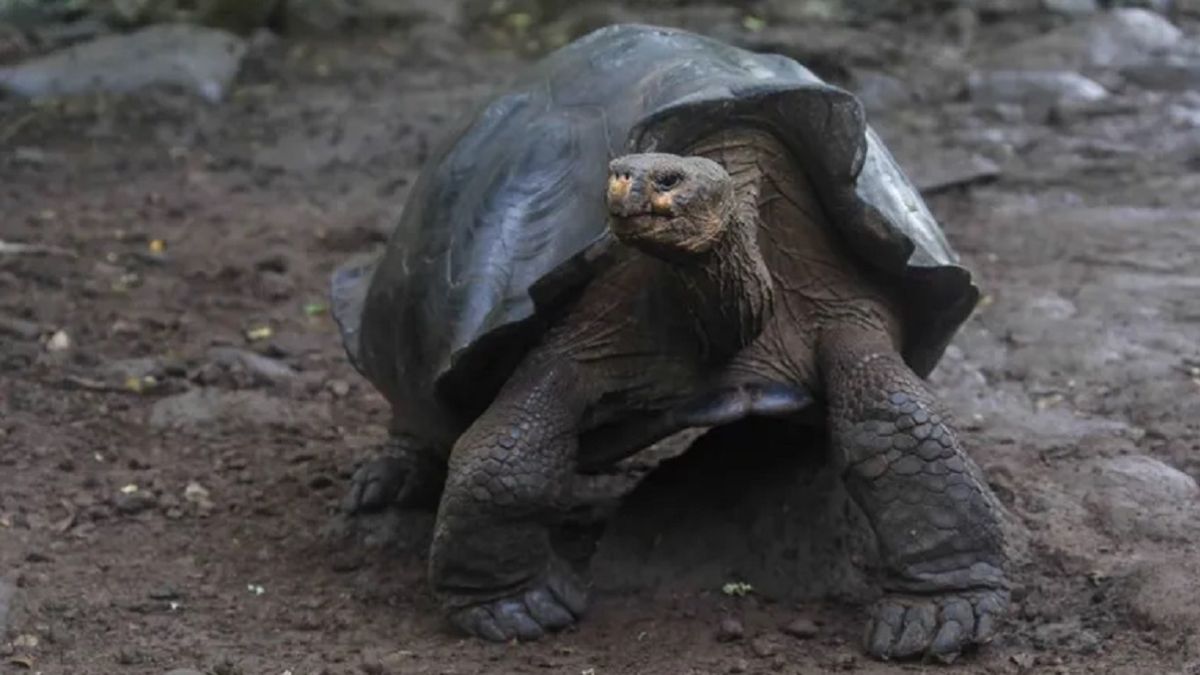The animal world is full of surprises. Thousands of species make up its fauna, including some that, despite have been with us for a long time, have not yet been described by science. This is the case of the giant tortoises that live on the island San Cristóbal, the easternmost of the Galapagos Islands. The Ministry of Environment, Water and Ecological Transition of Ecuador reported that, after carrying out a DNA study, it was determined that it is a new species.
“The species of giant tortoise that inhabits San Cristóbal Island, until now scientifically known as Chelonoidis chathamensiscorresponds genetically to a different species“, indicates the release. The ministry points out that, specifically, the species with which it corresponds believed to be extinct since the early 20th century.
The study was published in the scientific journal Heritageand will continue with the recovery of more DNA samples from bones and shells, in order to clarify whether these island turtles should receive a new name. The researchers who carried out these studies, from the universities of Newcastle, Yale and the NGO Galapagos Conservancycompared the genetic material of the turtles that inhabit the island with bones and shells collected in 1906.
The latter were collected in a cave in the highlands of the island. When making the description of Chelonoidis chathamensisthe group of expeditionaries that collected them did not reach the lowlands of San Cristóbal, where giant tortoises currently live. Thus, they concluded that “the almost eight thousand turtles that exist today in San Cristóbal might not be Chelonoidis chathamensisbut correspond to a completely new lineage,” explains the ministry.
NEWS | The species of giant tortoise that inhabits San Cristóbal Island, until now scientifically known as Chelonoidis chathamensis, genetically corresponds to a different species, which was believed to be extinct since the beginning of the 20th century.
Read more ➡️ https://t.co/9LlSNGK3Dg pic.twitter.com/trjjJpMl6K— Ministry of Environment, Water and Ecological Transition (@Ambiente_Ec) March 11, 2022
Origin of the Galapagos Islands
The NGO added, in turn, that the group of turtles Chelonoidis chathamensis from the highlands of the island “is almost certainly extinct”. According to what they indicate, two different species of turtles would have inhabited the island, one in the highlands and one in the lowlands. Danny Rueda, director of the Galapagos National Park, assures that the discovery “means the constant genetic variability” of the species on the island.
The Galapagos Islands are located about 1,000 kilometers from the coast of Ecuador and are 557 kilometers long. Specifically, the Island of San Cristóbal could have been divided millions of years ago, separated by the sea. Each of its parts would have its species of turtleand once the sea level dropped the two parts, like the species of turtles, ‘met’.
The name of the islands is due precisely to its giant tortoises. They are Natural Heritage of Humanity, thanks to its incomparable fauna and flora. Originally there were up to 15 species of giant tortoises: three became extinct centuries ago, as confirmed by the Galapagos National Park. In 2019, a specimen of Chelonoidis phantasticaafter considering extinct more than a hundred years agoon Fernandina Island.

















